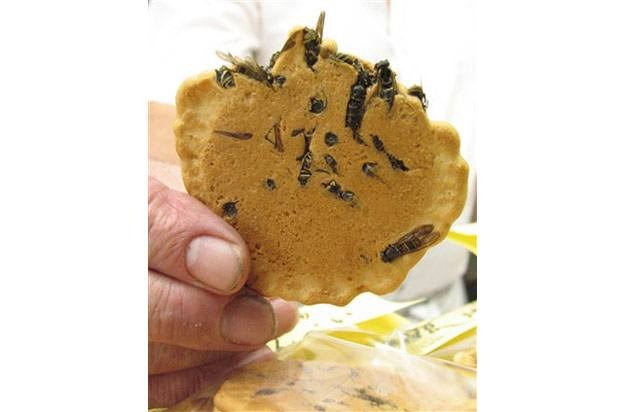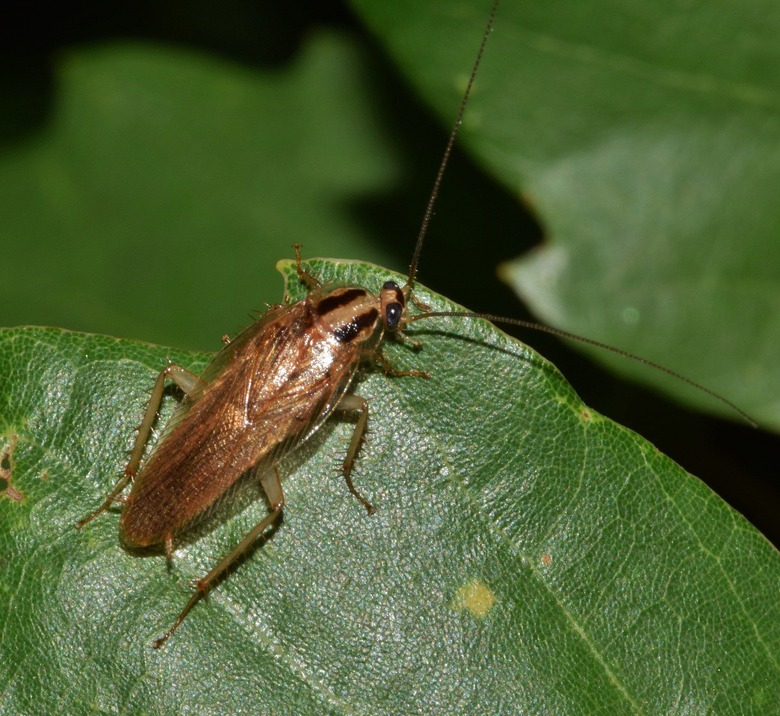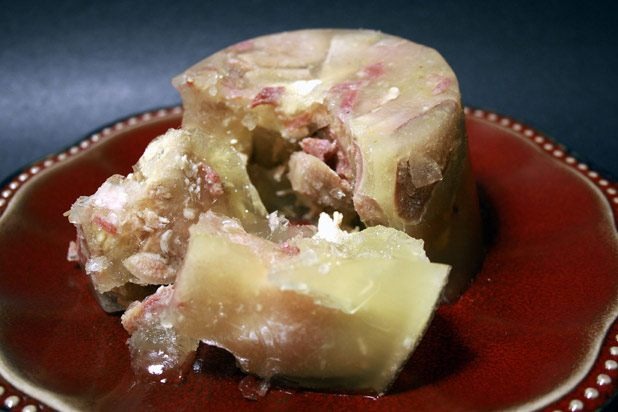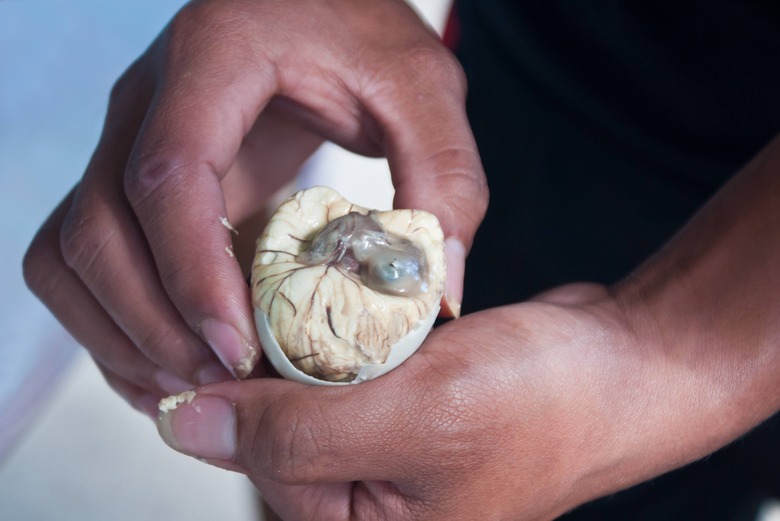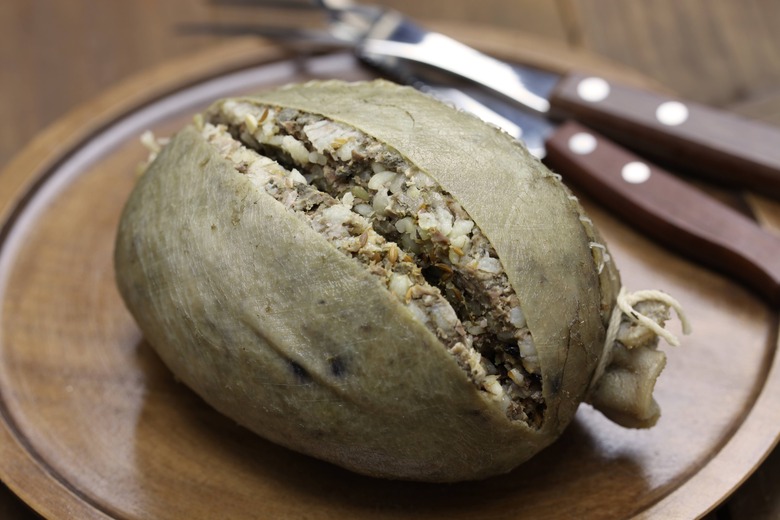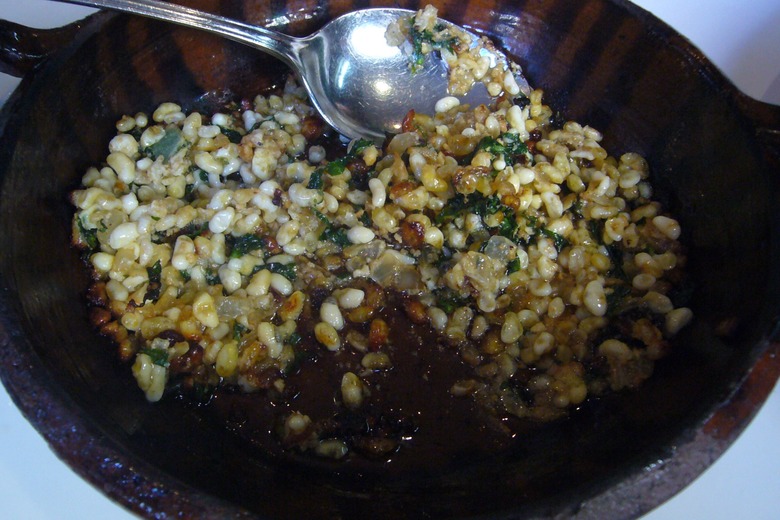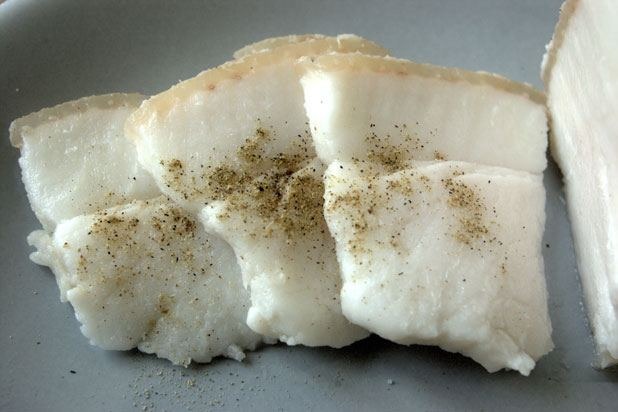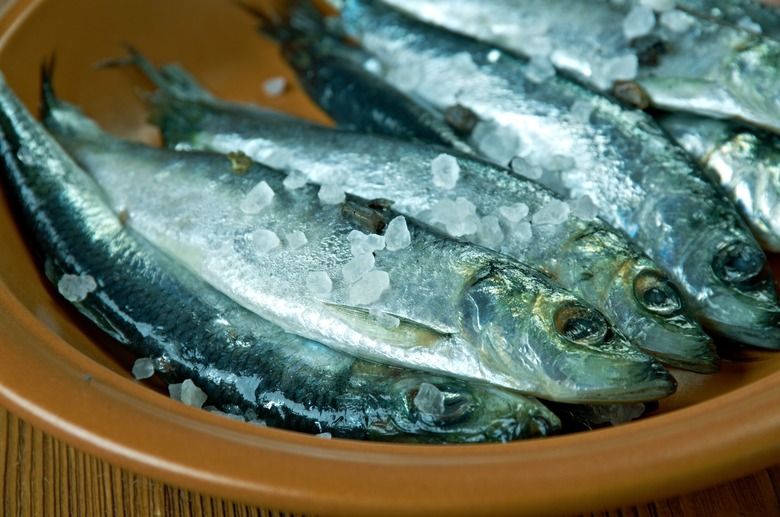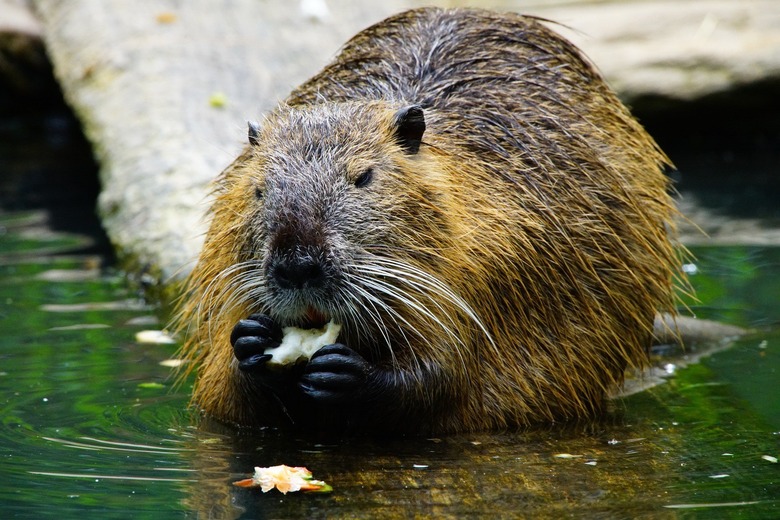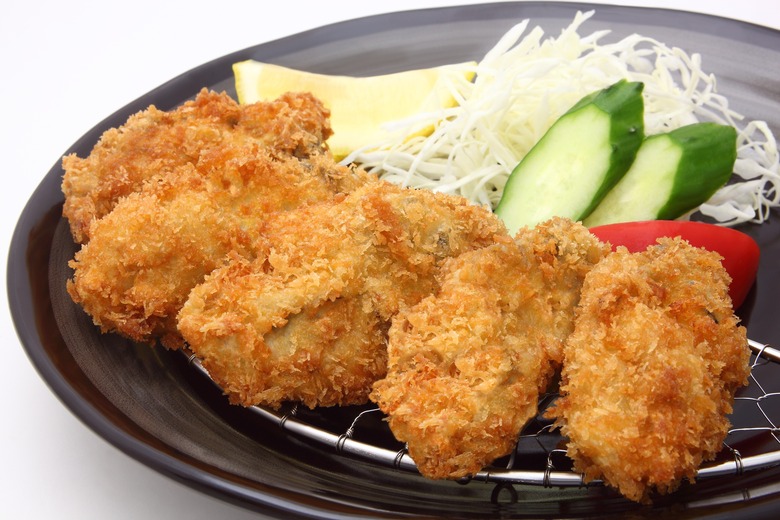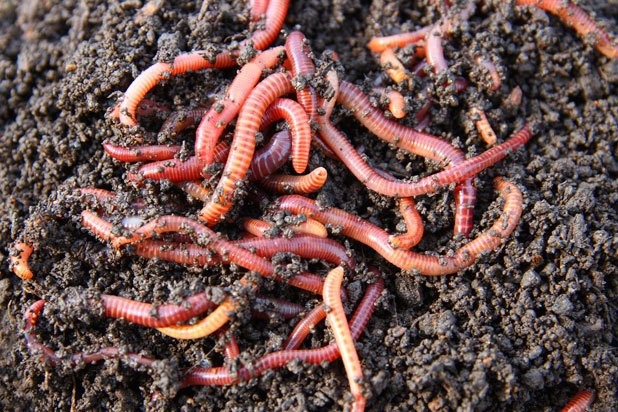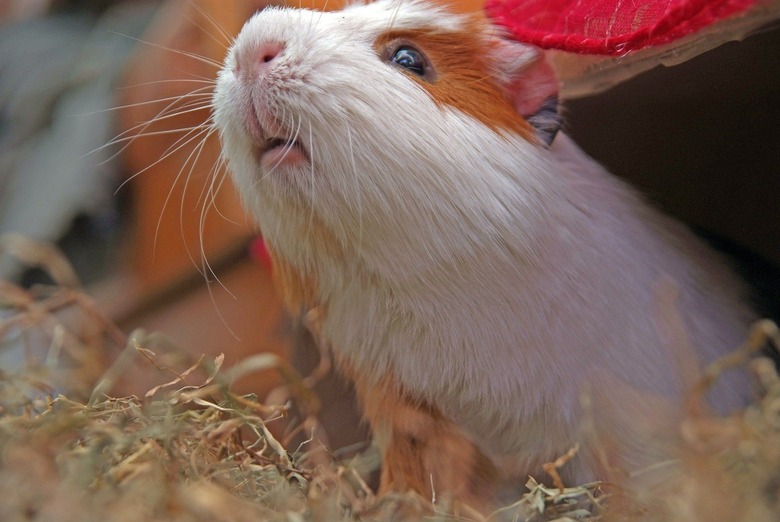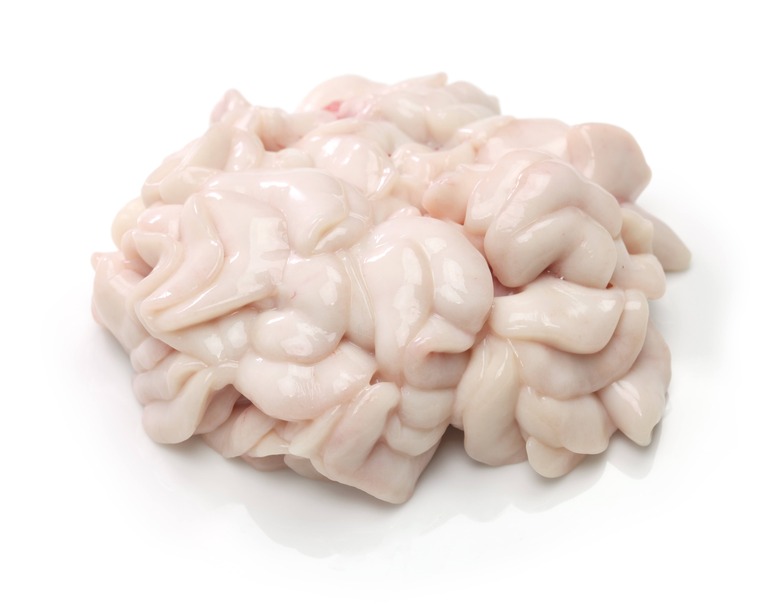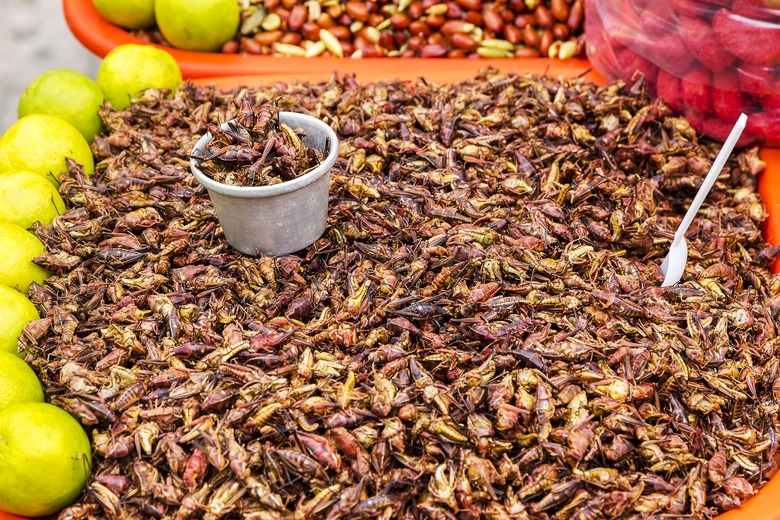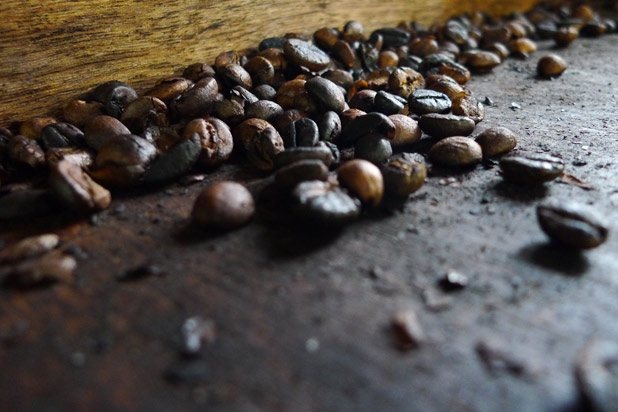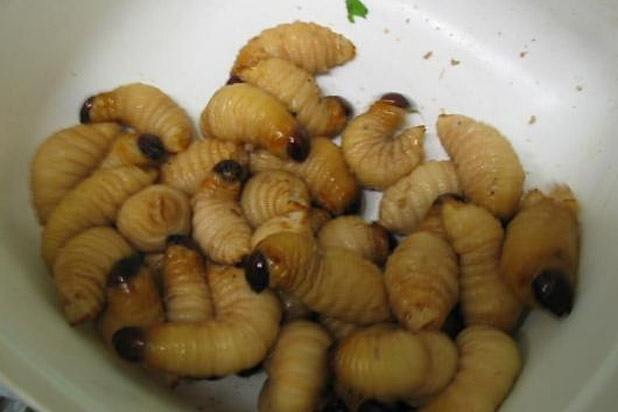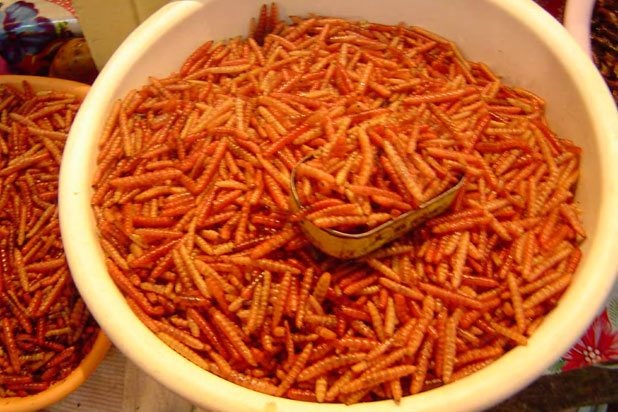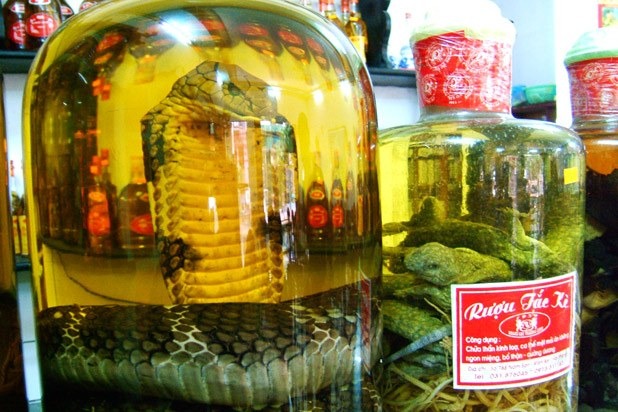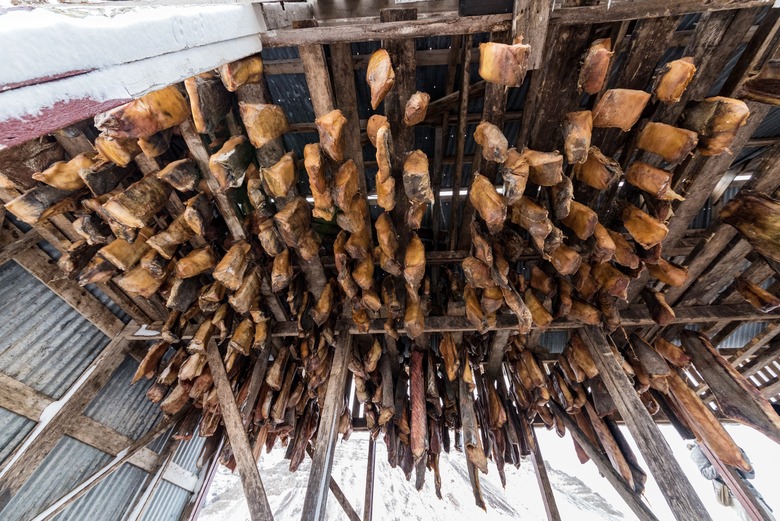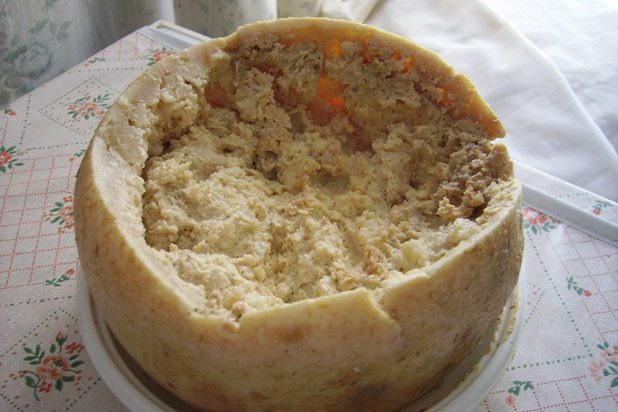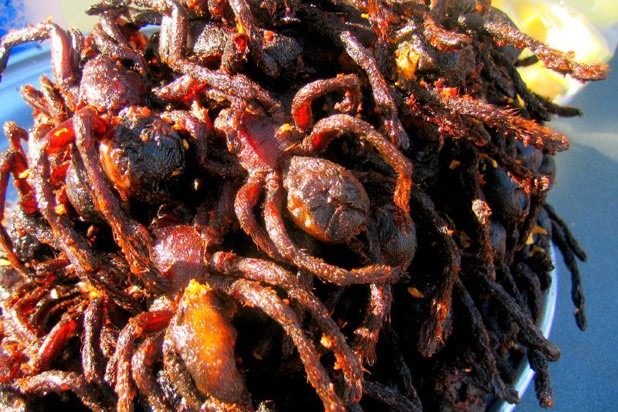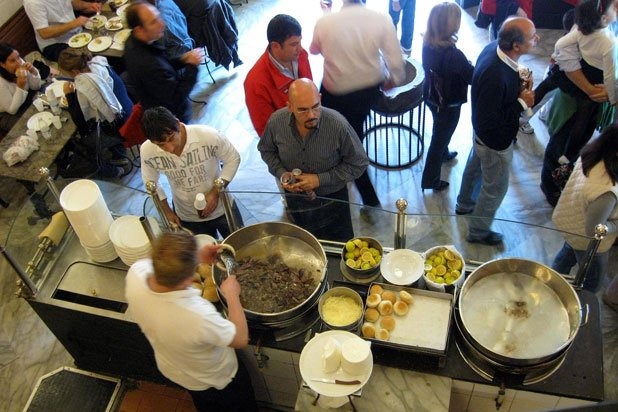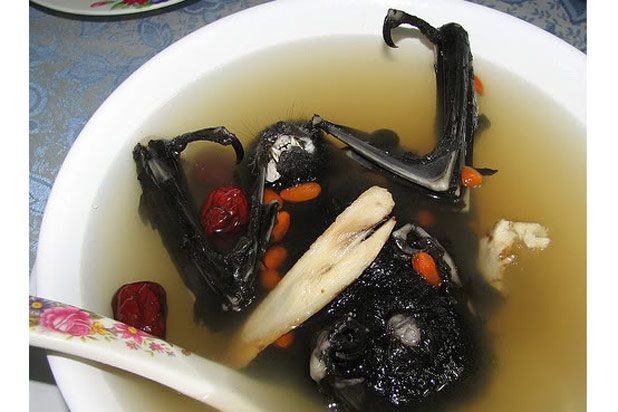Gross Or Great? 27 Unexpected Delicacies From Around The World Slideshow
For all those lamb lovers out there, this dish allows diners to come, literally, face-to-face with their meat. Whole sheep's head is presented intact and attached to the skull, sometimes even with the brain still inside.
Though seemingly gruesome, the eyeballs, tongue, cheeks, ears, and skin are surprisingly tender and succulent. Whole sheep's head is a culinary tradition in Northern Europe and the Mediterranean. When they're finished eating, chefs often use the remaining bones for soup stock.
To eat sheep's head, check out the Smalahovesleppet Festival on September 28 and 29 in Voss, Norway.
Wasp Crackers
Wasp crackers are the perfect snacks for diners seeking a culinary buzz. In the Japanese town of Omachi, about 100 miles outside of Tokyo, wasps are caught, boiled, dried, and infused into crisps.
A bag of 20 wasp crackers costs around $2 and can be purchased in shops in Omachi.
Human Placenta
Traditionally, placentophagy is the practice of mammals eating the placenta of their young after childbirth. The reason, presumably, is that the placenta retains a significant amount of vitamins and antibodies, providing a significant amount of nutrition for the animals that consume it.
In some cultures, however, placenta is also consumed by humans. In China, placenta is an ingredient used in traditional holistic medicines, such as zihéche, which includes dried human placenta and is prescribed to treat diseases like infertility and impotence.
There is controversy over whether eating placenta actually has any nutritional or medicinal benefit for humans. One theory holds that human placentophagy helps thwart post-partum depression, increases the production of breast milk, and decreases the onset of insomnia in new mothers. But some doctors insist that since humans are already well-nourished mammals, there is no medical reason for humans to consume placenta.
Teriyaki Cockroaches
Hissing cockroaches are one of the the largest species of cockroach, and sometimes can grow as large as 7.5 centimeters. At the Gene Rurka Farm in New Jersey, these crawling critters are injected with honey and soy sauce, fried, and served as a crunchy treat.
To learn more about bug eating with Gene Rurka, click here.
Jellied Moose Nose
Jellied moose nose is an Alaskan delicacy composed of cooked moose snout. To cook this dish, chefs remove the bulbous appendage from the moose, slice it, and boil it until all the hair can be plucked away easily.
After the hair is removed, the snout is returned to boiling water and onion, garlic, and spices are added. Eventually, the nose softens into a gelatinous texture.
Balut
Balut, or soft-boiled fetal duck, is a street food delicacy found in areas of the Philippines and Vietnam. The duck fetus remains inside its egg-shell incubator, which contains the bones, feathers, and beak of the partially developed bird.
Most fetuses are incubated for two to three weeks before being consumed. Servings of balut are slurped from the shell with a pinch of salt and a pint of beer.
Find balut on the menu at Maharlika in New York City.
Haggis
Haggis is a dish native to Scotland and made of the heart, liver, and lung meat of a sheep or calf. Though the description may not initially appeal to the appetite, haggis actually has a nutty, savory taste and is considered a staple of customary Scottish cuisine.
Traditionally, haggis is prepared with minced onion, oatmeal, and spices and then left to simmer for several hours. Variations include vegetarian haggis and haggis pakora, a delicacy served at many Indian restaurants throughout Scotland. If ever in Edinburgh, give haggis a shot at Findlay's of Portobello.
Escamoles
Escamoles are ant larvae harvested from the roots of agave and maguey plants in Mexico and can be bought at Mercado San Juan in Mexico City.
These insect eggs are typically used as toppings on Mexican dishes like tacos and are said to have a buttery, nutty flavor and the consistency of cottage cheese.
Salo
The word salo is referred to in English as lard. Salo is a Slavic dish consisting of cured pork fat slabs, often added to sausage but also available for consuming raw or smoked.
Originating from Ukraine, salo is often seasoned with garlic, pepper, or salt and accompanied by a shot of vodka. Purchase salo at the Salo Modern Art Museum in Lviv, Ukraine.
Surströmming
Surströmming is canned and fermented Baltic herring from northern Sweden, and its pungent aroma is known to be vomit-inducing for first-timers.
When the cans are opened, surströmming gives off an odor so putrid that purveyors strongly recommend only consuming the fish outdoors to prevent the smell from seeping into clothes and furniture.
"I recommend anybody going into any department store in any Scandinavian country to buy themselves a tin of...surströmming," said Andrew Zimmern, host of Travel Channel's Bizarre Foods America. "[It's] one of the all-time most heinous foods in the world. Easy to get; not fun to eat it. It's pretty foul."
Surströmming is traditionally consumed as an ingredient in sandwiches and is often served with condiments such as gräddfil (sour cream) in southern Sweden. Buy a can of surströmming at ICA supermarkets throughout Scandinavia.
Nutria
Also known as river rats, these semi-aquatic rodents originate from South America and are known for their destruction of water plants. In Louisiana, for example, nutria have caused extensive damage to the state's coastal wetlands.
Some regions encourage eating these pesky creatures in an attempt to curb the prevalence of nutria infestations. Nutria are low in fat and protein-heavy, and are said to be a healthy alternative to chicken.
Common nutria recipes include nutria chili, nutria gumbo, and nutria jambalaya.
Rocky Mountain Oysters
Bull-calf testicles are considered a delectable dish in many ranching regions of North America, where the testicles of young bulls are removed to prevent aggressive behavior.
This delicacy is heralded in cowboy culinary culture as the ultimate tasting test of manhood and can be prepared deep-fried, marinated, or served with cocktail sauce for dipping. In Canada, the dish is called prairie oysters and is smothered in a savory demi-glace.
For those ready and willing, restaurants like Buckhorn Exchange in Denver have Rocky Mountain oysters on the menu.
Worm Pretzels
For die-hard fans of the New York soft pretzel, worm pretzels are a culinary creation not to be missed.
Wormzels are a delicacy consisting of dehydrated earthworms contorted into a pretzel shape and are sold at the Gene Rurka Farm in New Jersey. For more information on these squiggly snacks, click here.
Cuy
Though some people may consider guinea pigs a cuddly, domesticated pet, these rodents are a tasty source of meat in Ecuador, Bolivia, and the Andean regions of Peru.
Cuy meat is low-fat, extremely tender, and the animal is sometimes served whole with the head still attached. Cuy tastes most succulent when skewered, slow-cooked rotisserie style, and coated with tangy hot sauce. If traveling through Peru, try cuy at Papa Pacha in Cusco.
Shirako
Shirako refers to the milt, or seminal fluid, of fish and mollusks. The milt of water creatures, such as cod, anglerfish, and puffer fish, has a custard-like texture when cooked and is eaten as a delicacy in Japan.
Try shirako at Sushisho Saito in Japan or Zenkichi in Brooklyn, N.Y.
Chapulines
Chapulines, or grasshoppers, elevate bug-eating to a gourmet delicacy. Eaten predominantly in the Oaxaca region of Mexico, chapulines are high in nutrients and provide a cheap source of protein. Classic chapuline recipes incorporate tortillas, chile, garlic, and lime juice.
Chapulines must be thoroughly cooked before consumption, as they sometimes carry nematodes that can infest the human body. Buy these crunchy critters at the Benito Juarez Market in Oaxaca, Mexico.
Kopi Luwak
Also know as civet coffee, this type of exotic caffeinated bean is consumed by Asian palm civet animals, which pass the beans through their digestive tracts and defecate, releasing the beans, which are then harvested to brew coffee.
Once released from the civet, these beans are washed extensively and left out in the sun to roast. Kopi luwak exudes a strong coffee scent and has less of a bitter aftertaste than other brews.
Coffee drinkers with money to spare can invest in a mug of Kopi luwak beans for a cost of up to $227 per pound. Have a sip at Jezalin's Gourmet Market in New York City.
Sago Worms
Sago worms are the larvae of sago palm weevil, a type of snout beetle eaten in regions of Southeast Asia. To eat them raw, grab the worm by the head and bite off its squirming body.
Sago worms have a gooey, fatty texture when eaten alive and a bacon-like taste when fried. Give them a try at Nibong Seafood Restaurant in Sarawak, Malaysia; the sago palm, where the worms are found, is widely cultivated there.
Yak Penis
Yak penis is on the menu for the fearless to try at the Guo Li Zhuang Restaurant in Beijing.
This specialty item is said to treat impotency in men and help clear skin in women. The meat is typically doused in hot or soy sauce and has a rubbery texture.
Chinicuiles
These caterpillar worms are a savory delicacy of Mexico. Similar to escamoles, chinicuiles infest the roots of maguey and agave plants before being harvested for eating.
Chinicuiles are red, fleshy, and considered highly nutritious, containing high levels of protein. Consume these critters alive, deep-fried, or roasted inside tacos with guacamole. Eat them at Palma 23 outpost of the El Cardenal restaurant in Mexico City.
Snake Wine
Shots of snake blood are an adventurous drinking pastime of Southeast Asia and can be experienced at locations like the Huaxi Market in Taipei. To prepare, hawkers slice a snake along its underbelly and drain its blood into a glass filled with rice wine or grain alcohol. Snake bile can also be extracted from the gallbladder and consumed as a shot.
Other forms of snake wine, known as steeped snake wine, are found in large glass jars of rice wine containing the body of a poisonous snake. Don't worry; the venom won't harm you because of the wine's high alcohol content.
Hakarl
Hakarl is an Iceland delicacy that consists of cured rotted meat from the body of a Greenland or basking shark. The Greenland shark is naturally poisonous when it is alive due to its high levels of uric acid. Hakarl is fermented for six to 12 weeks and then dried for several months.
The resulting dish exudes a pungent and overwhelming ammonia odor and has a sharp, fishy taste. A shot of Brennivin, a local spirit, is usually served with the dish to ease the process of swallowing. Local Icelandic supermarkets and restaurants like The Sea Baron in Reykjavik sell Hakarl.
Casu Marzu
Most people enjoy aged cheese, but casu marzu tests the palates of all dairy connoisseurs. Coming from Sardinia in Italy, casu marzu is rotten sheep's milk cheese decomposed within the pecorino rind. The kicker? The cheese contains live insect larvae.
The larvae are added to the cheese to aid in the fermentation process, and the result is a cheese with a very soft, sometimes liquified, texture that can contain thousands of hungry maggots.
Caution should be taken when ingesting casu marzu, as the larvae are notorious for launching up to 6 inches into the air when disturbed.
As a result of health and hygiene regulations, the selling of casu marzu was made illegal in the European Union, though it's still available on the black market.
For more information on casu marzu, click here.
Fried Tarantula
A delicacy of Cambodia, fried tarantulas are consumed primarily in towns such as Skuon, where they are sold in stalls at food markets. Crispy tarantulas with lime and kampot black pepper dip is served at Friends in Phnom Penh.
Locals began eating the eight-legged creatures in order to stave off famine during the reign of Khmer Rouge in the 1970s. These edible spiders are fried in oil and contain gooey insides with a crunchy exterior.
Squirrel Brains
Squirrel brains are a regional delicacy in Appalachian regions in Kentucky. Popular recipes include scrambling squirrel brains with eggs or including the meat in a stew known as burgoo.
In recent years, however, doctors have warned against squirrel consumption because of the possibility that squirrels carry a variant of fatal mad cow disease.
Pani Ca' Meusa
Spleen sandwiches are a savory favorite for diners circuiting the Sicilian street food scene. This sandwich is stuffed with lemon, caciocavallo cheese, and veal spleen meat that has been deep-fried in lard.
The flavor is said to taste similar to calf liver with a chewier texture. You can taste pani ca' meusa for yourself at Pani Ca' Meusa Porta Carbone in Palermo, Sicily or click here to learn more about eating spleen sandwiches in Palermo.
Bat Paste
Capture a bat, chuck it live into a vat of boiling water, season it with spices, and mash it into paste to create this potentially harmful dish (bats often carry many diseases). Andrew Zimmern of Travel Channel's Bizarre Food America tried the hard-to-locate treat in the hills outside Chang Mai in the heart of the golden triangle in Thailand.

